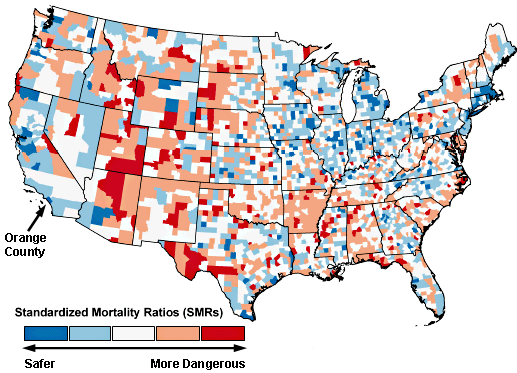CHART OF THE DAY….From “Spatial patterns of natural hazards mortality in the United States,” this map shows where you’re most likely to die from natural disasters. (Data is from 1970-2004.) As you can see, my hometown of Orange County is one of the safest places in the country, despite its worryingly close proximity to the San Andreas fault. You see, although you may think that earthquakes are dangerous, it turns out they are a mere rounding error when it comes to dying at the hands of nature’s awesome wrath. By far the biggest causes of death by natural disaster are cold weather, hot weather, lightning, flooding, and tornadoes. Earthquake deaths are so microscopic they don’t even get a category or their own.
On the other hand, we’re still waiting for the Big One out here. This map could change color at any time.
(By the way, just eyeballing this, it looks to me like Massachusetts is the safest state in the union. Connecticut and Rhode Island are pretty good too. Who knew?)


















